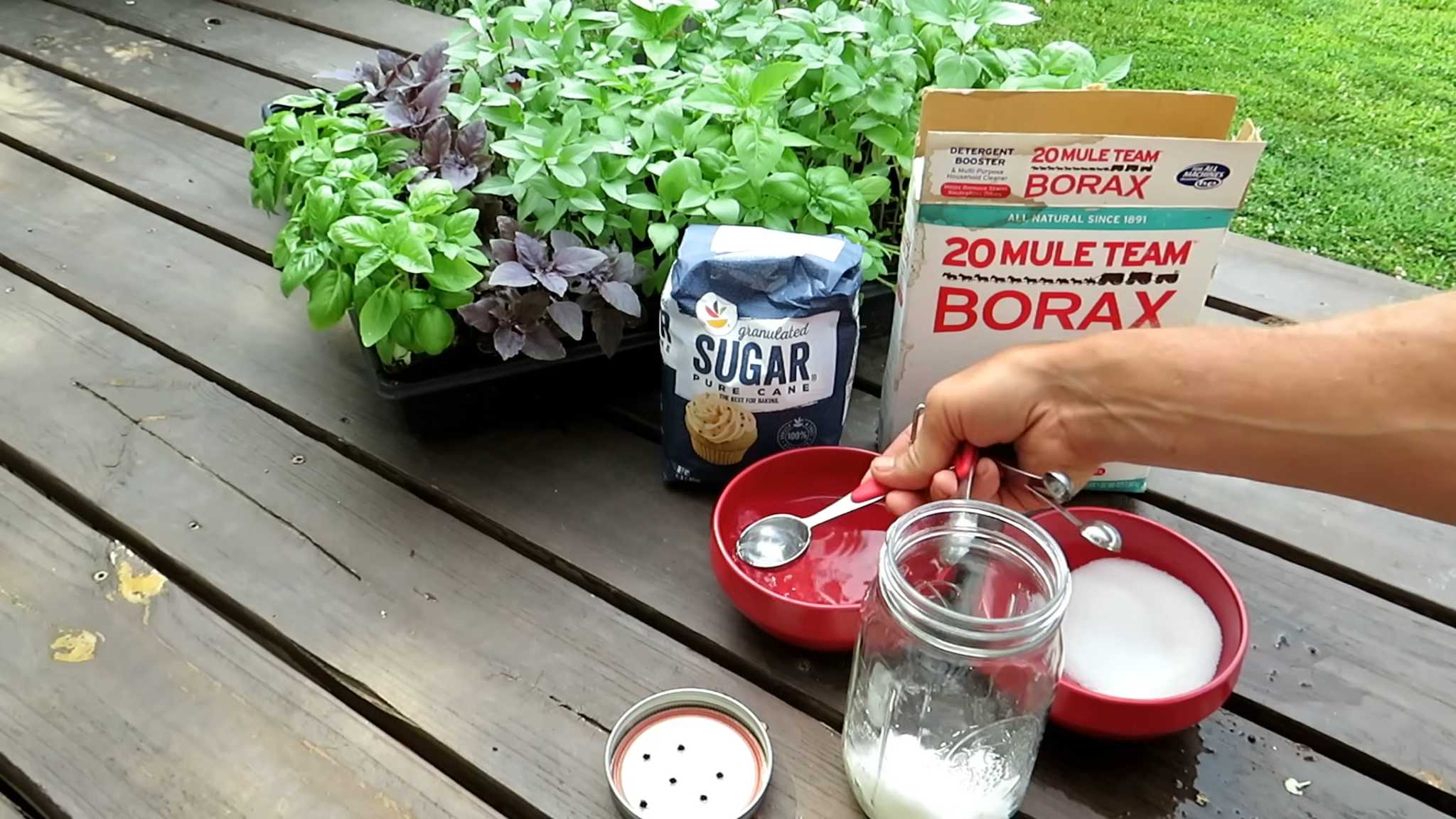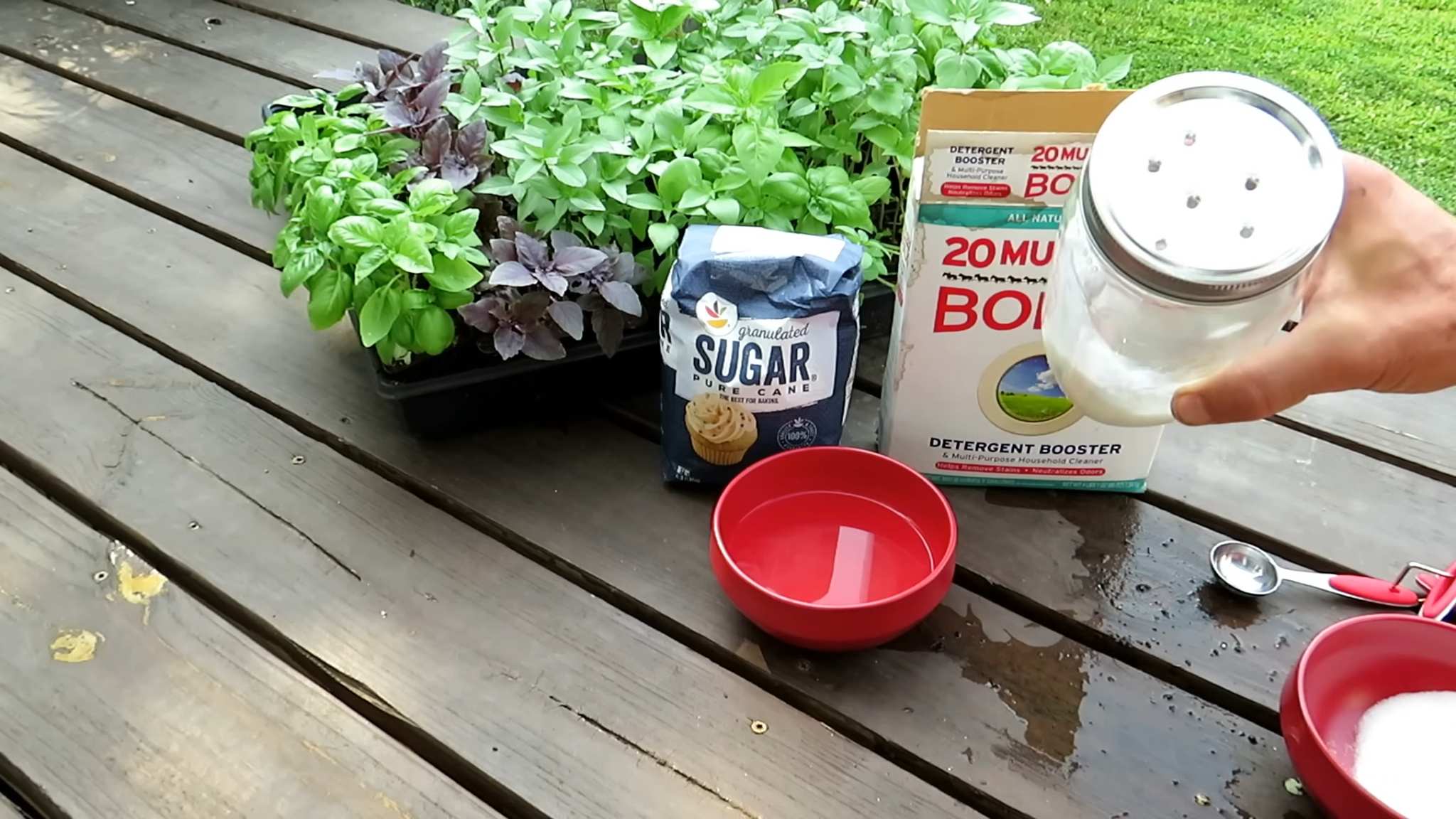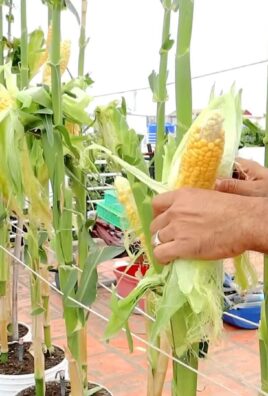DIY ant killer: Are pesky ants turning your kitchen into their personal picnic ground? I know the feeling! It’s frustrating to see these tiny invaders marching across your countertops, especially when you’ve just cleaned. But before you reach for harsh chemicals, let’s explore some effective and eco-friendly solutions you can whip up right in your own home.
Humans have been battling ants for centuries! From ancient civilizations using natural repellents to modern-day pest control, the struggle is real. But the good news is, you don’t need to be a professional exterminator to win this war. I’m going to share some simple, yet powerful, DIY ant killer recipes that are safe for your family and pets, and incredibly effective at getting rid of those unwanted guests.
Why resort to DIY? Well, many commercial ant killers contain harsh chemicals that can be harmful to your loved ones and the environment. Plus, they can be quite expensive! With these DIY tricks, you’ll save money, protect your family, and feel good about using natural solutions. So, let’s dive in and discover how to create your own arsenal of ant-fighting weapons!

DIY Ant Killer: Safe, Effective, and Budget-Friendly!
Hey everyone! Tired of those pesky ants invading your kitchen? I know I am! Store-bought ant killers can be expensive and often contain harsh chemicals that I’m not comfortable using around my family and pets. So, I’ve been experimenting with DIY ant killers for years, and I’ve finally perfected a recipe that’s both incredibly effective and safe. This guide will walk you through creating your own ant-killing bait stations using simple ingredients you probably already have in your pantry. Let’s get rid of those ants!
Understanding Ant Behavior: Why Bait Stations Work
Before we dive into the recipe, it’s important to understand why bait stations are so effective. Ants are social creatures, and they work together to find food for their colony. When an ant discovers a food source, it leaves a pheromone trail for other ants to follow. Bait stations exploit this behavior. The ants are attracted to the sweet bait, and they carry it back to their nest, sharing it with the queen and other members of the colony. This is crucial because killing individual ants you see only addresses the symptom, not the source of the problem. The bait station poisons the entire colony from within.
Ingredients You’ll Need
Here’s what you’ll need to create your DIY ant killer:
* Borax (Sodium Borate): This is the active ingredient that will kill the ants. You can find it in the laundry aisle of most grocery stores.
* Sugar: This attracts the ants and encourages them to take the bait back to their colony.
* Water: To dissolve the borax and sugar and create a liquid bait.
* Cotton Balls: These act as sponges, soaking up the bait and providing a convenient way for the ants to access it.
* Small Containers: You’ll need small, shallow containers to hold the cotton balls soaked in the bait. I like to use bottle caps, small plastic lids, or even cut-up plastic containers.
* Optional: Honey or Corn Syrup: These can be added to make the bait even more attractive to ants, especially if they’re being picky.
Making the Ant Bait Solution
This is where the magic happens! The key to a successful ant bait is getting the right ratio of borax to sugar. Too much borax, and the ants will be repelled. Too little, and it won’t be effective.
1. Prepare Your Work Area: Cover your work surface with newspaper or a placemat to protect it from spills.
2. Mix the Ingredients: In a small bowl, combine 1 tablespoon of borax with 3 tablespoons of sugar.
3. Add Water Gradually: Slowly add warm water, a tablespoon at a time, stirring constantly until the borax and sugar are completely dissolved. You want a syrupy consistency, not too watery. I usually end up using about 4-6 tablespoons of water.
4. Optional: Add Honey or Corn Syrup: If you’re using honey or corn syrup, add about a teaspoon to the mixture and stir well. This can make the bait even more enticing.
5. Test the Consistency: The mixture should be thin enough to soak into the cotton balls but thick enough to hold its shape slightly. If it’s too watery, add a little more sugar. If it’s too thick, add a little more water.
Creating the Bait Stations
Now that you have your ant-killing solution, it’s time to create the bait stations.
1. Prepare the Containers: Gather your small containers (bottle caps, lids, etc.). Make sure they are clean and dry.
2. Soak the Cotton Balls: Dip the cotton balls into the borax-sugar solution, making sure they are thoroughly soaked but not dripping. You want them to be saturated so the ants have plenty to feed on.
3. Place Cotton Balls in Containers: Place the soaked cotton balls into the prepared containers.
4. Set Up the Bait Stations: Place the bait stations in areas where you’ve seen ants. Common spots include near sinks, under appliances, along baseboards, and near cracks and crevices.
Placement is Key: Where to Put Your Bait Stations
The effectiveness of your DIY ant killer depends heavily on where you place the bait stations. Here are some tips:
* Follow the Ant Trails: Observe where the ants are traveling and place the bait stations directly in their path.
* Near Water Sources: Ants are often attracted to water, so place bait stations near sinks, faucets, and leaky pipes.
* Under Appliances: Check under your refrigerator, dishwasher, and stove for ant activity.
* Along Baseboards: Ants often travel along baseboards, so place bait stations along the walls.
* Inside Cabinets: If you’ve seen ants in your cabinets, place bait stations inside, away from food storage areas.
* Outdoors: If you know where the ants are entering your home from outside, place bait stations near the entry points.
Monitoring and Maintenance
Once you’ve set up your bait stations, it’s important to monitor them regularly and replenish the bait as needed.
1. Check the Bait Stations Daily: Observe the bait stations to see if the ants are feeding on the bait. If the cotton balls are drying out or the bait is being consumed quickly, replenish them with fresh solution.
2. Don’t Disturb the Ants: Avoid spraying or killing the ants you see feeding on the bait. Remember, you want them to carry the bait back to their colony.
3. Be Patient: It may take several days or even a week or two to completely eliminate the ant colony. Be patient and continue to replenish the bait as needed.
4. Adjust the Bait if Necessary: If the ants aren’t attracted to the bait, try adjusting the recipe. You can add more sugar or honey to make it sweeter, or you can try a different type of sugar, such as powdered sugar.
5. Clean Up Spills: If any of the bait solution spills, clean it up immediately to prevent attracting other pests.
Safety Precautions
While this DIY ant killer is much safer than commercial products, it’s still important to take some precautions:
* Keep Out of Reach of Children and Pets: Borax can be harmful if ingested, so keep the bait stations out of reach of children and pets. Place them in areas where they can’t be easily accessed.
* Wash Your Hands: After handling the borax and sugar solution, wash your hands thoroughly with soap and water.
* Don’t Use Near Food Preparation Areas: Avoid placing bait stations directly on countertops or near food preparation areas.
* Supervise Pets: If you have pets, supervise them closely to ensure they don’t ingest the bait.
Troubleshooting: What to Do If It’s Not Working
Sometimes, even with the best efforts, the ants may not be attracted to the bait or the colony may not be eliminated. Here are some troubleshooting tips:
* Try a Different Sugar: Different ant species have different preferences. Try using powdered sugar, brown sugar, or even corn syrup instead of granulated sugar.
* Add Protein: Some ant species prefer protein to sugar. Try adding a small amount of peanut butter or grease to the bait.
* Move the Bait Stations: If the ants aren’t finding the bait stations, try moving them to different locations.
* Eliminate Other Food Sources: Make sure to eliminate other food sources that may be attracting the ants, such as crumbs, spills, and open food containers.
* Identify the Ant Species: If you can identify the ant species, you can research their specific preferences and adjust the bait accordingly.
* Consider a Professional: If you’ve tried everything and the ants are still a problem, it may be time to call a professional pest control service.
Alternative Bait Station Designs
While the cotton ball method is simple and effective, here are a few alternative bait station designs you can try:
* Straw Bait Stations: Cut straws into short lengths and fill them with the borax-sugar solution. Seal the ends with tape or glue. Place the straws near ant trails.
* Jar Lid Bait Stations: Drill small holes in the lid of a jar and fill the jar with the borax-sugar solution. The ants can enter the jar through the holes and feed on the bait.
* Plastic Container Bait Stations: Cut small holes in the sides of a plastic container and place a cotton ball soaked in the borax-sugar solution inside. The ants can enter the container through the holes and feed on the bait.
Why This Works: The Science Behind It
The effectiveness of this DIY ant killer lies in the slow-acting nature of borax. Unlike harsh chemicals that kill ants on contact, borax disrupts their digestive system. This slow-acting poison allows the ants to carry the bait back to their colony and share it with other members, including the queen. By the time the borax takes effect,

Conclusion
So, there you have it! This simple, effective, and budget-friendly DIY ant killer is a game-changer for anyone battling those persistent little invaders. Forget expensive, chemical-laden sprays that can be harmful to your family and pets. This method utilizes readily available ingredients, is incredibly easy to whip up, and delivers impressive results.
Why is this a must-try? Because it’s a safe, natural alternative that actually works. It targets the ants at their source, eliminating the colony rather than just killing the ones you see scurrying across your countertops. Plus, you have complete control over the ingredients, ensuring you’re not introducing any unwanted toxins into your home.
But the beauty of this DIY solution lies in its adaptability. Feel free to experiment with variations to suit your specific needs and preferences. For a stronger solution, you can increase the concentration of borax, but always remember to keep it away from children and pets. Some people find that adding a few drops of essential oils, like peppermint or citrus, can enhance the lure and further deter ants from returning. Another variation involves using corn syrup instead of sugar, which some believe is even more effective at attracting ants.
Don’t be afraid to get creative! The key is to find the right balance of sweetness and borax that works for your particular ant problem. Remember to monitor the bait stations regularly and replenish them as needed. Persistence is key, especially when dealing with a large or well-established colony.
We are confident that this DIY ant killer will become your go-to solution for keeping your home ant-free. It’s a cost-effective, environmentally friendly, and surprisingly satisfying way to take control of your pest problem.
Now, it’s your turn! We encourage you to give this DIY ant killer a try. We’re eager to hear about your experiences and any variations you discover along the way. Share your success stories, tips, and tricks in the comments below. Let’s build a community of DIY pest control experts and help each other keep our homes happy and ant-free! Your feedback will not only help others but also contribute to refining this already effective method. So, grab your ingredients, mix up a batch, and say goodbye to those pesky ants for good!
Frequently Asked Questions (FAQ)
What exactly is borax, and is it safe to use around my home?
Borax, also known as sodium borate, is a naturally occurring mineral compound. While it’s generally considered safer than many commercial pesticides, it’s still important to handle it with care. Borax can be irritating to the skin and eyes, and it should never be ingested. Keep it out of reach of children and pets. When using borax in your DIY ant killer, ensure the bait stations are placed in areas inaccessible to them. If you have concerns about using borax, consider exploring alternative natural ant control methods, although their effectiveness may vary. Always wash your hands thoroughly after handling borax.
How does this DIY ant killer actually work to eliminate the ants?
The magic lies in the slow-acting nature of borax. The sweet bait attracts the ants, who then consume the mixture and carry it back to their colony. The borax acts as a poison, disrupting their digestive system and eventually leading to their demise. Because it’s slow-acting, the ants have time to share the bait with other members of the colony, including the queen, effectively eliminating the entire nest over time. This is far more effective than simply killing the ants you see, as it targets the source of the problem.
Where are the best places to put the bait stations for maximum effectiveness?
The ideal placement for your bait stations is along ant trails or in areas where you frequently see ants. Common spots include near sinks, under appliances, along baseboards, and around windows and doors. Observe the ants to determine their travel routes and place the bait stations directly in their path. Avoid placing the bait stations in areas where they might be disturbed or accidentally knocked over. It’s also important to keep the bait stations away from food preparation areas to prevent contamination.
How long does it typically take to see results after setting up the bait stations?
Patience is key! It can take anywhere from a few days to a couple of weeks to see a significant reduction in the ant population. The exact timeframe depends on the size of the colony and the ants’ feeding habits. Don’t be discouraged if you don’t see immediate results. Continue to monitor the bait stations and replenish them as needed. You may even notice an initial increase in ant activity as they discover the bait, but this is a good sign that they are taking the bait back to the colony.
What if the ants aren’t attracted to the bait? What can I do?
If the ants aren’t showing interest in your bait, there are a few things you can try. First, make sure the bait is fresh and hasn’t dried out. You may need to replenish it more frequently, especially in dry environments. Second, experiment with the sugar-to-borax ratio. Some ants prefer a sweeter bait, while others may be more attracted to a slightly higher concentration of borax. Try adjusting the ratio slightly and see if that makes a difference. Finally, consider offering different types of bait. Some ants prefer honey, while others are more attracted to jelly or even peanut butter. You can try offering small amounts of different baits alongside your borax mixture to see which one the ants prefer.
Can I use this DIY ant killer outdoors as well?
Yes, this DIY ant killer can be used outdoors, but you’ll need to take precautions to protect it from the elements and prevent it from being accessed by non-target animals. You can use covered bait stations or place the bait under rocks or other objects to shield it from rain and wind. Be mindful of the potential impact on beneficial insects and avoid placing the bait near flowering plants or other areas where they are likely to forage. Regularly check the bait stations and replenish them as needed, especially after rain.
Is this DIY ant killer safe for pets and children?
While this DIY ant killer is generally considered safer than commercial pesticides, it’s still important to take precautions to protect pets and children. Borax can be harmful if ingested, so it’s crucial to keep the bait stations out of their reach. Place the bait stations in areas that are inaccessible to them, such as behind appliances or under furniture. Consider using covered bait stations to further minimize the risk of accidental ingestion. If you have concerns about using borax around pets or children, explore alternative natural ant control methods that are specifically designed to be pet- and child-safe. If you suspect that a pet or child has ingested borax, contact a veterinarian or poison control center immediately.
What are some other natural ways to prevent ants from entering my home?
Prevention is always better than cure! There are several natural ways to deter ants from entering your home. Keep your kitchen clean and free of food debris. Wipe up spills immediately and store food in airtight containers. Seal any cracks or crevices in your walls and foundation to prevent ants from entering. Use natural repellents, such as vinegar, lemon juice, or essential oils, to deter ants from areas where they are likely to enter. You can also try planting ant-repelling herbs, such as peppermint, lavender, or rosemary, around your home. Regularly inspect your property for ant nests and take steps to eliminate them if you find them.





Leave a Comment